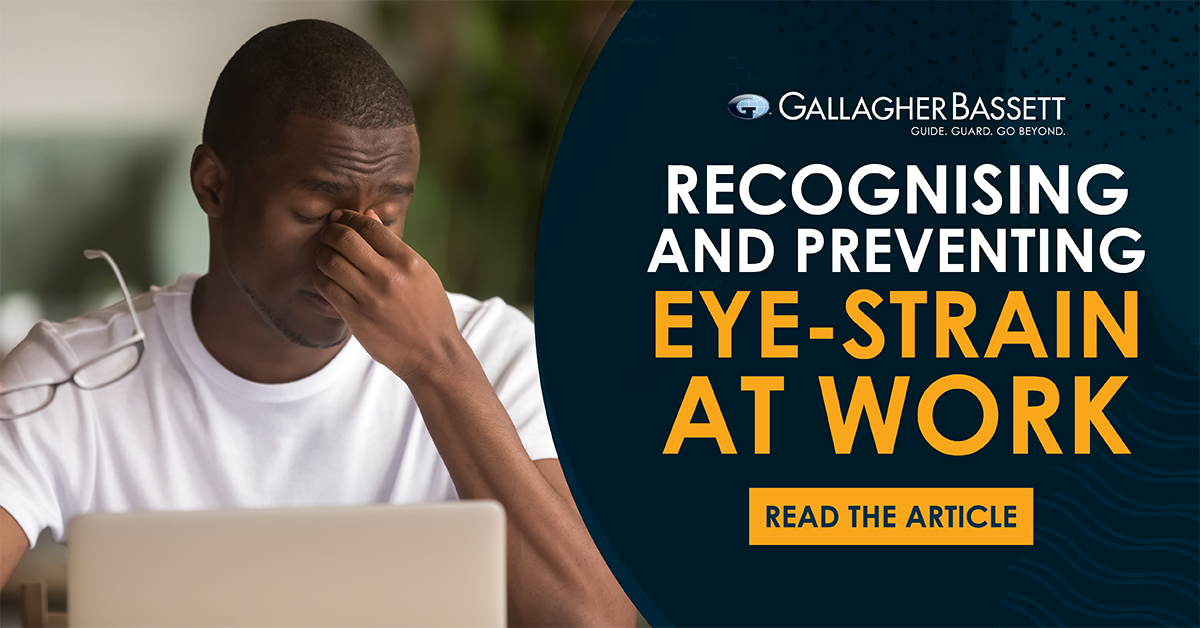Eye strain at Work - The facts are eye-opening!

How are you reading this? At work on your computer? On your phone? A laptop? An ipad? Chances are, you are reading this on an electronic device of some sort.
According to OPSM, on average, people of working age in Australia now spend over 6 hours a day staring at screens, causing our eyes to look at a fixed distance for long periods of time putting immense strain on your eye muscles.
What is eye strain?
Eye strain is a form of discomfort which occurs when eye muscles are overused. Like any muscle that is held in the one position for too long it will eventually become strained.
When concentrating on tasks such as reading, working at the computer or watching television for prolonged periods of time, your inner eye muscles tighten.
Another commonly used term related to eye strain is Computer Vision Syndrome, also referred to as Digital Eye Strain. Computer Vision Syndrome is the combination of eye strain and body muscle strain that is experienced during or related to computer use.
What causes eye strain and how do you spot it?
The most obvious cause of eye strain and Computer Vision Syndrome is prolonged use of the eye, however uncorrected vision defects e.g. the need for glasses, inappropriate glasses prescription, eye muscle imbalance, poor lighting or other incorrect positioning of computer screens, keyboards or chair can all contribute to eye to the pain and discomfort known as eye strain.
According to the Australian Government’s Comcare, up to 50,000 eye injuries occur in Australia each year with seven in 1000 workers sustaining eye damage.
It is also important to note, that you don’t just have to be an office worker to suffer from eye strain. If you work outside, you may be prone to eye strain as a result of the glare and reflection from the sun.
Signs and symptoms include:
- Eye discomfort
- Sore, tired or itchy eyes
- Difficulty focusing
- Headaches or brow-ache
- Blurred or double vision
- Squinting to see clearly
- Pain in and around the eyes
- Dry eyes that feel scratchy/gritty
- Red, watery eyes
- Light sensitivity
- Burning sensation when you close your eyes
- Muscle spasms in muscles around eyes
- Twitching of eyelids
- Feeling of heaviness in eyes
How to prevent digital eye strain:
The effective management of eye health is an important contribution to the health and safety of your workplace so it is important that all employers a promoting the importance of eye safety
If your workforce is experiencing digital eye strain, the simplest way to reduce this is by encouraging them to take occasional breaks when working on the computer.
We encourage people to use the 20/20/20 rule – every 20 minutes, focus on an object 20 feet away for 20 seconds.
We’ve got a poster you can download to encourage your co-workers to 20/20/20.
In addition to this, we recommend using an appropriate computer screen, having an ergonomic assessment completed and doing regular health and safety training with your employees.
By ensuring there is no glare or reflection and having the intensity of the lighting assessed you can also rest assured there are no other contributing factors to possible eye strain at work. Most Medical Practitioners also recommend having an annual vision test as well.
Healthy employees make a healthy business. The healthiest Australian employees are almost three times more productive than their unhealthy colleagues. GB’s Health and Wellbeing Program can support your organisation to take a proactive and preventative approach to improving the health and wellbeing of your employees.
This publication is not intended to offer legal advice or client-specific risk management advice. General descriptions contained herein do not include complete definitions, terms, and/or conditions, and should not be relied on for claims management interpretation. Actual claims and risk management policies must always be consulted for full coverage details and analysis.

